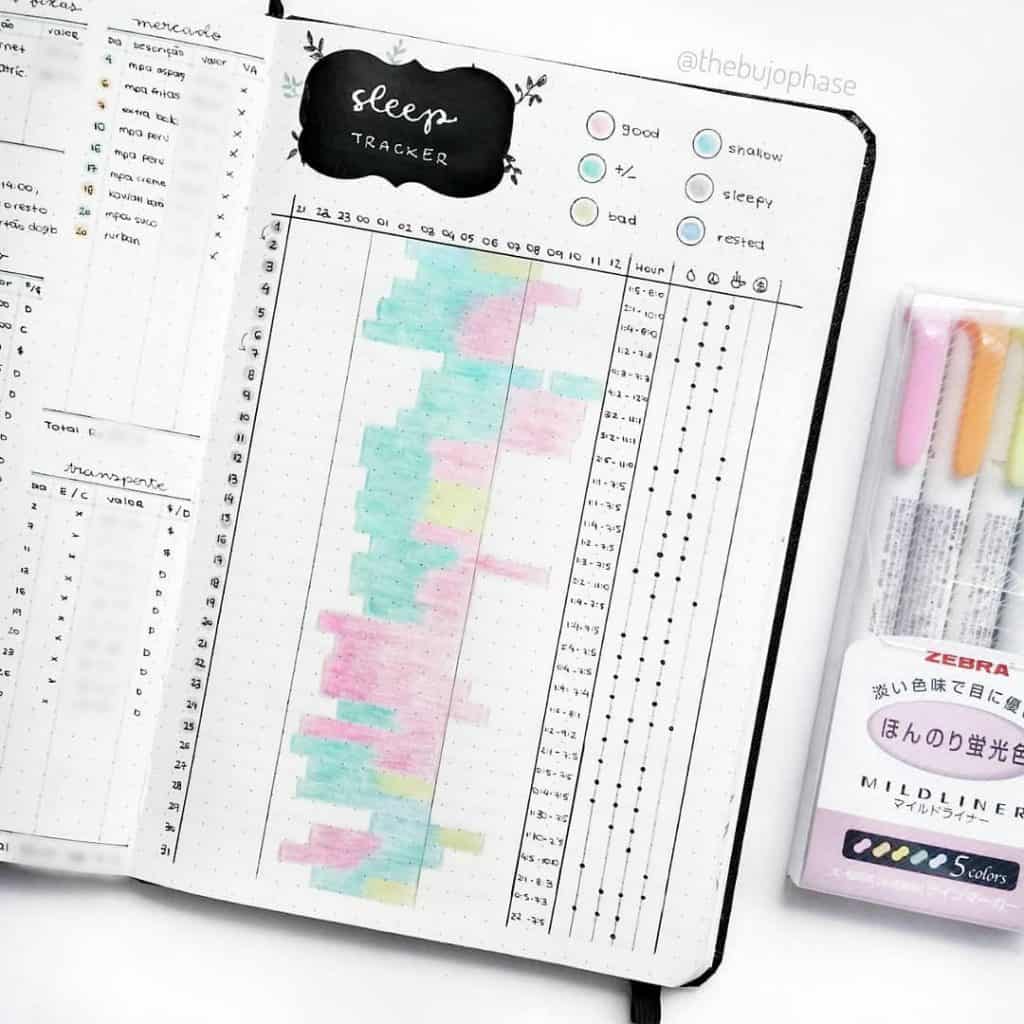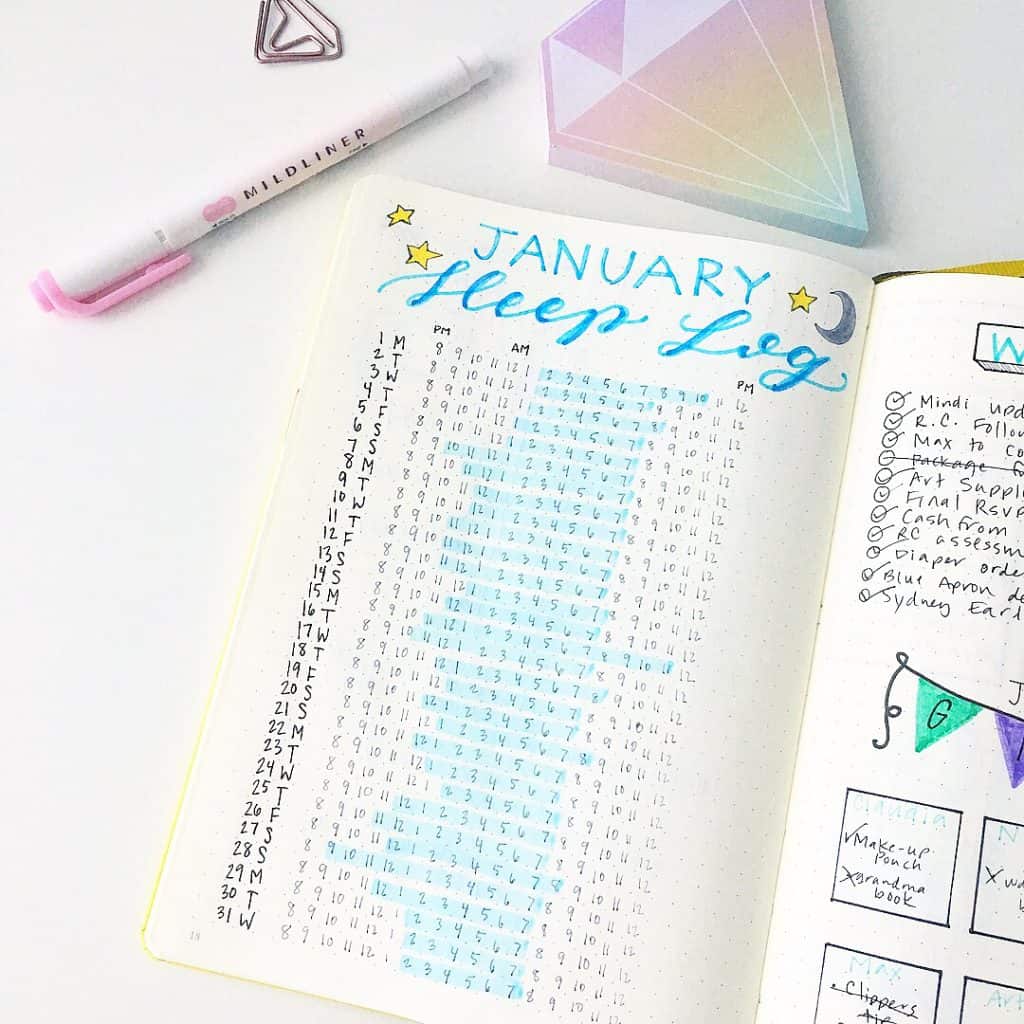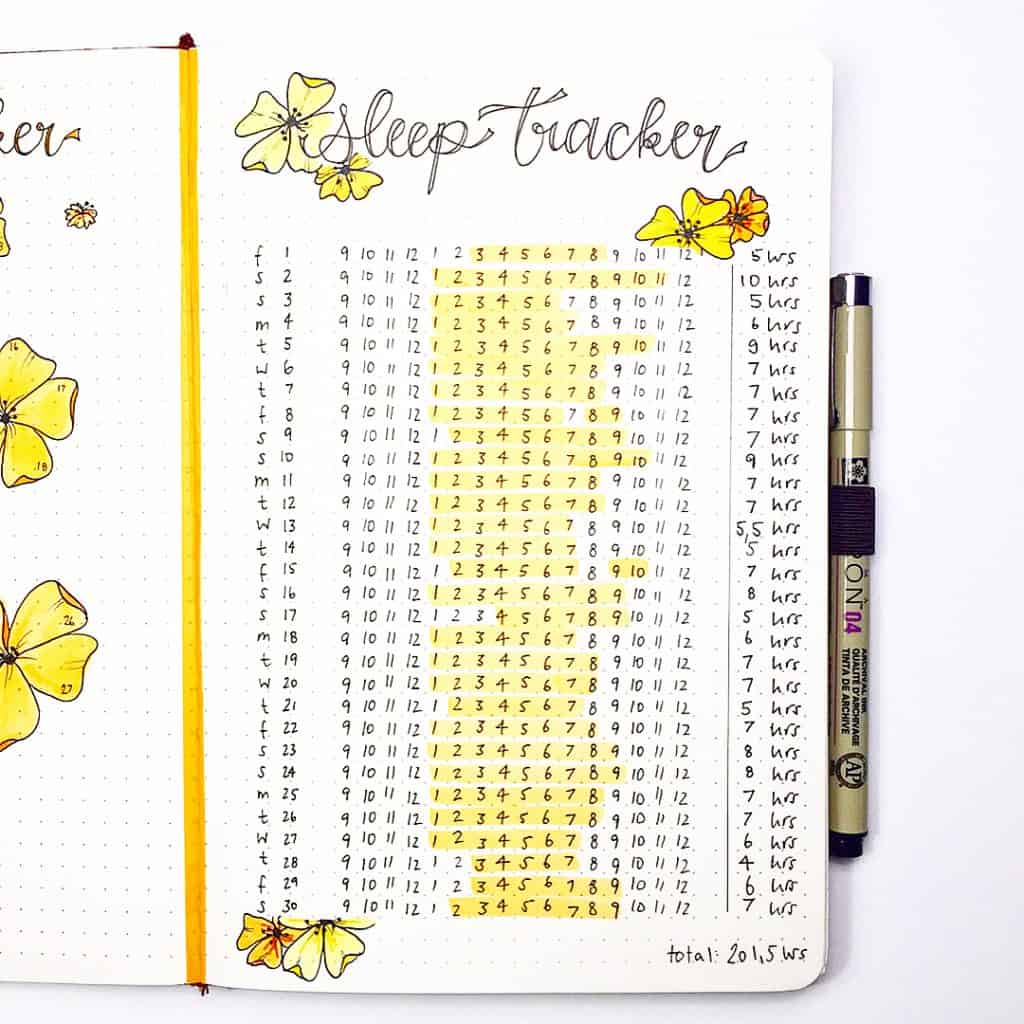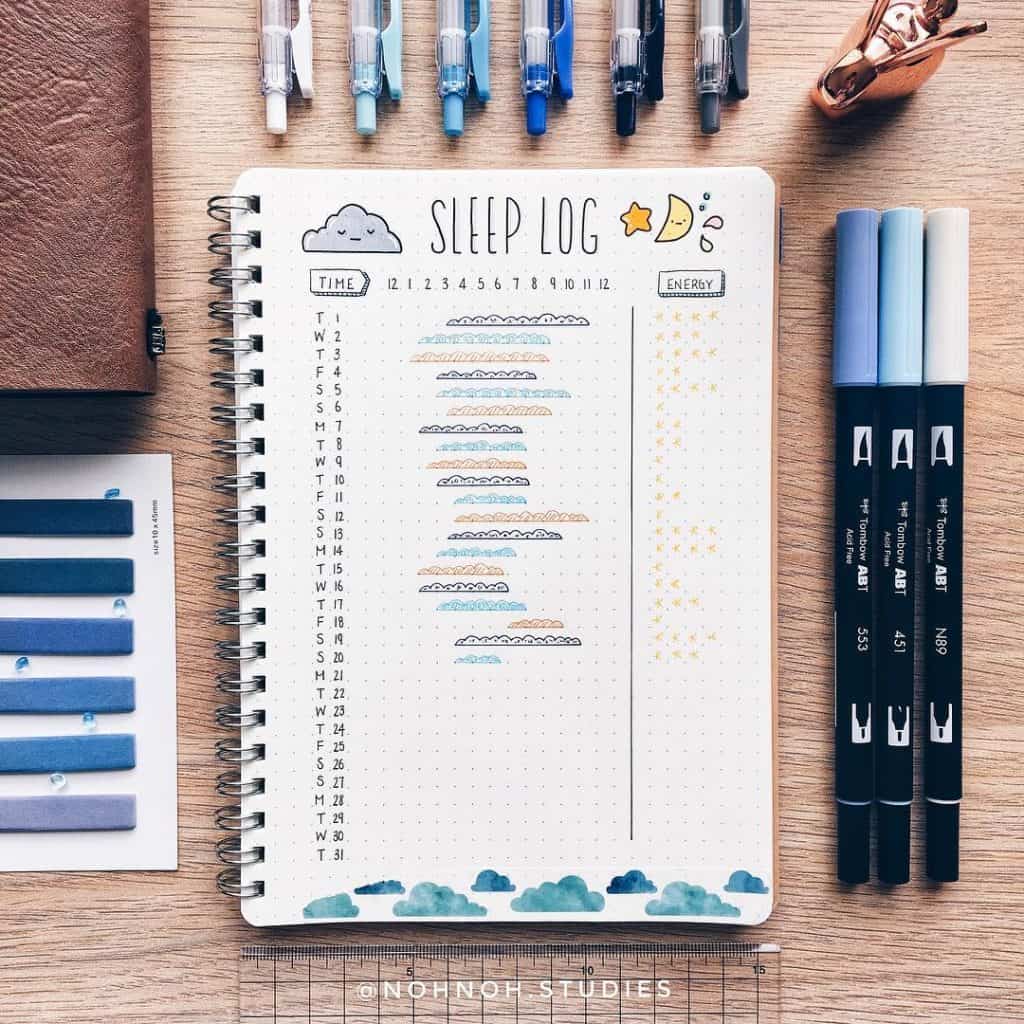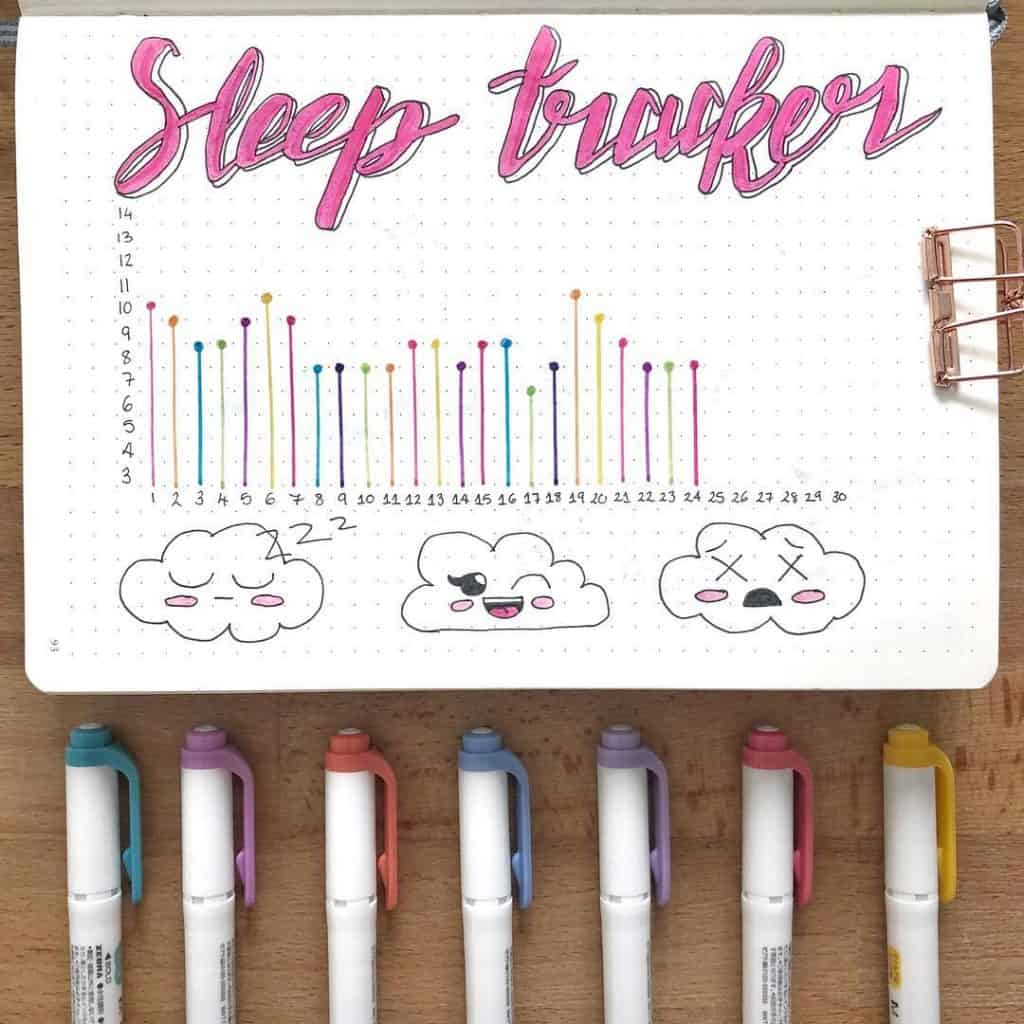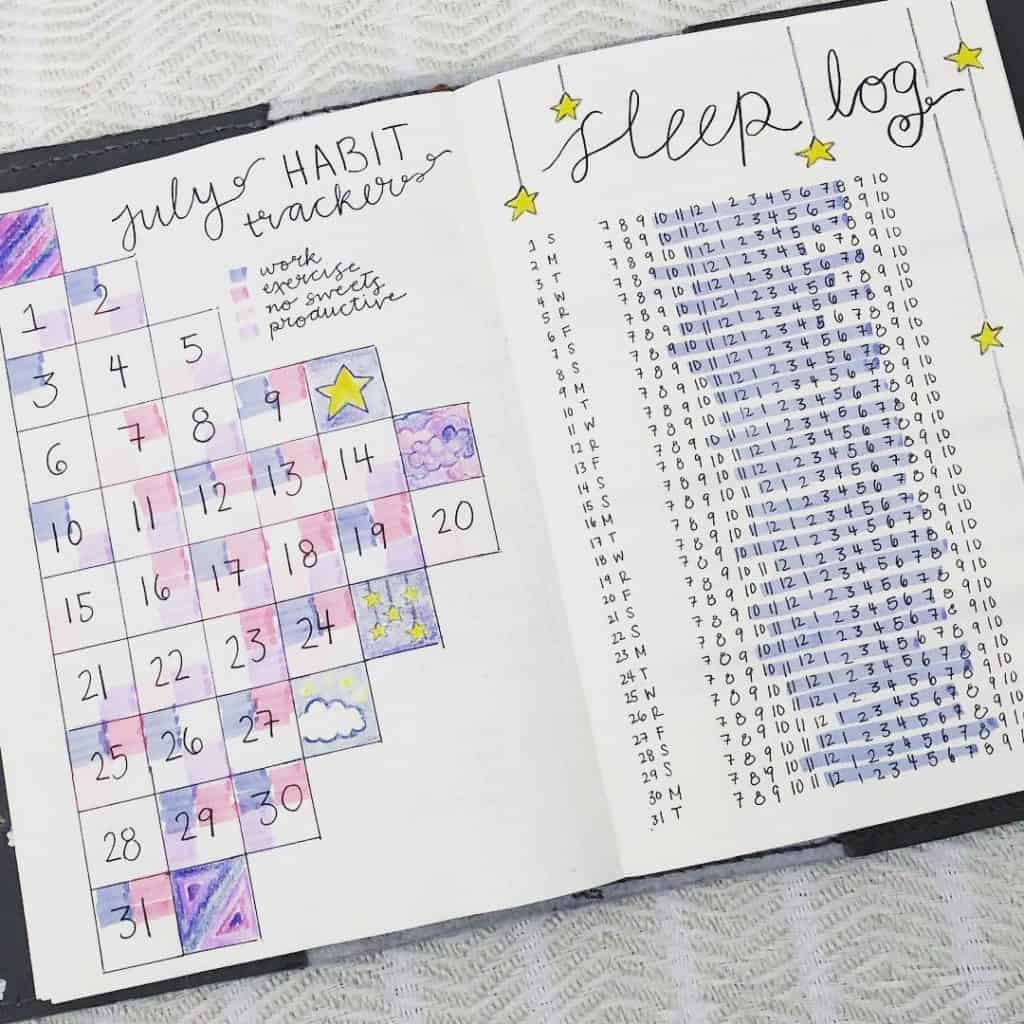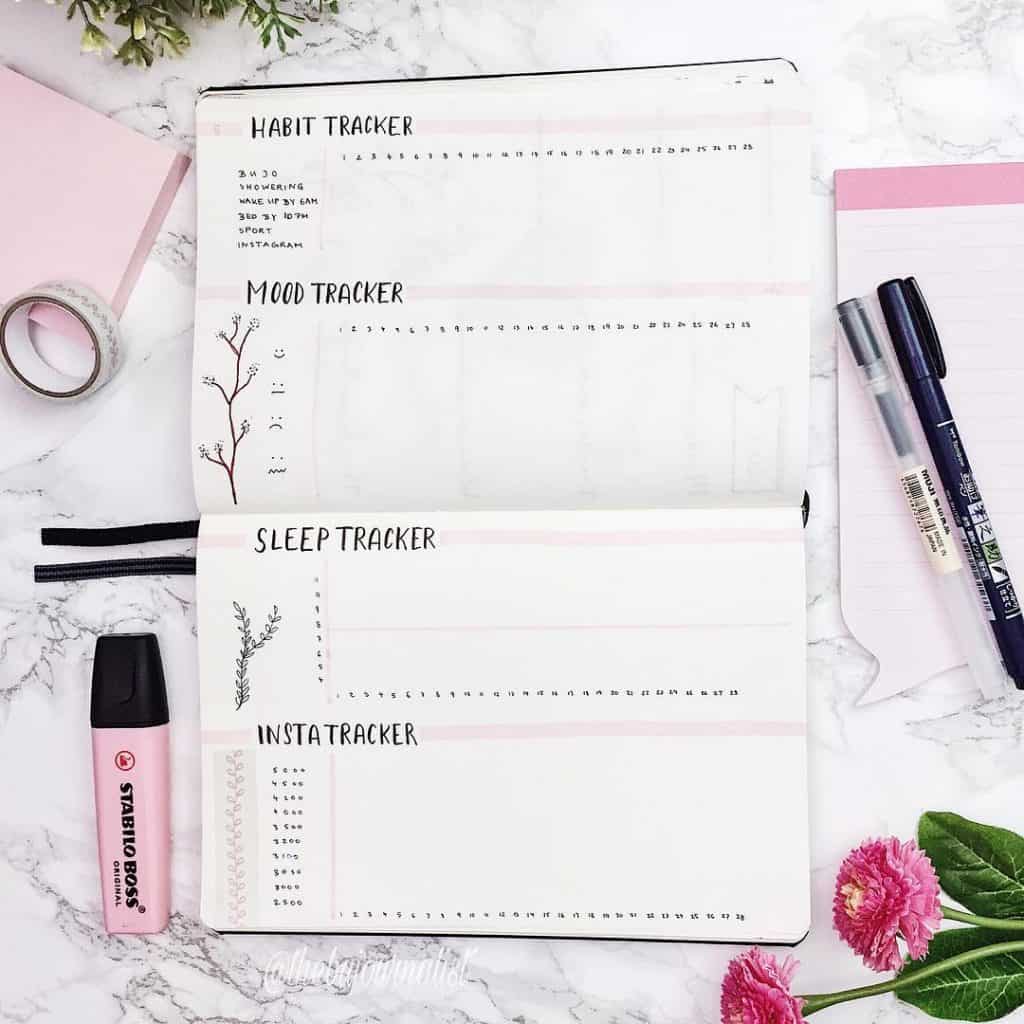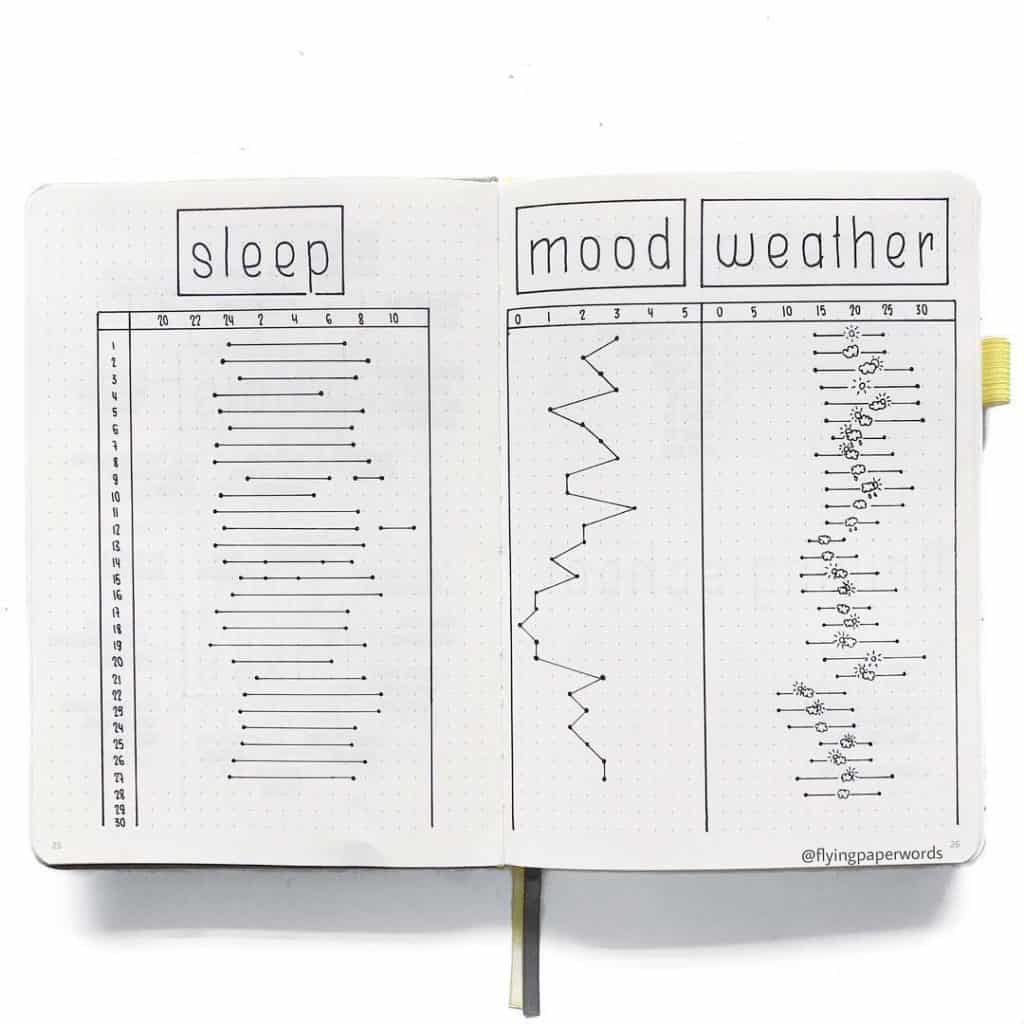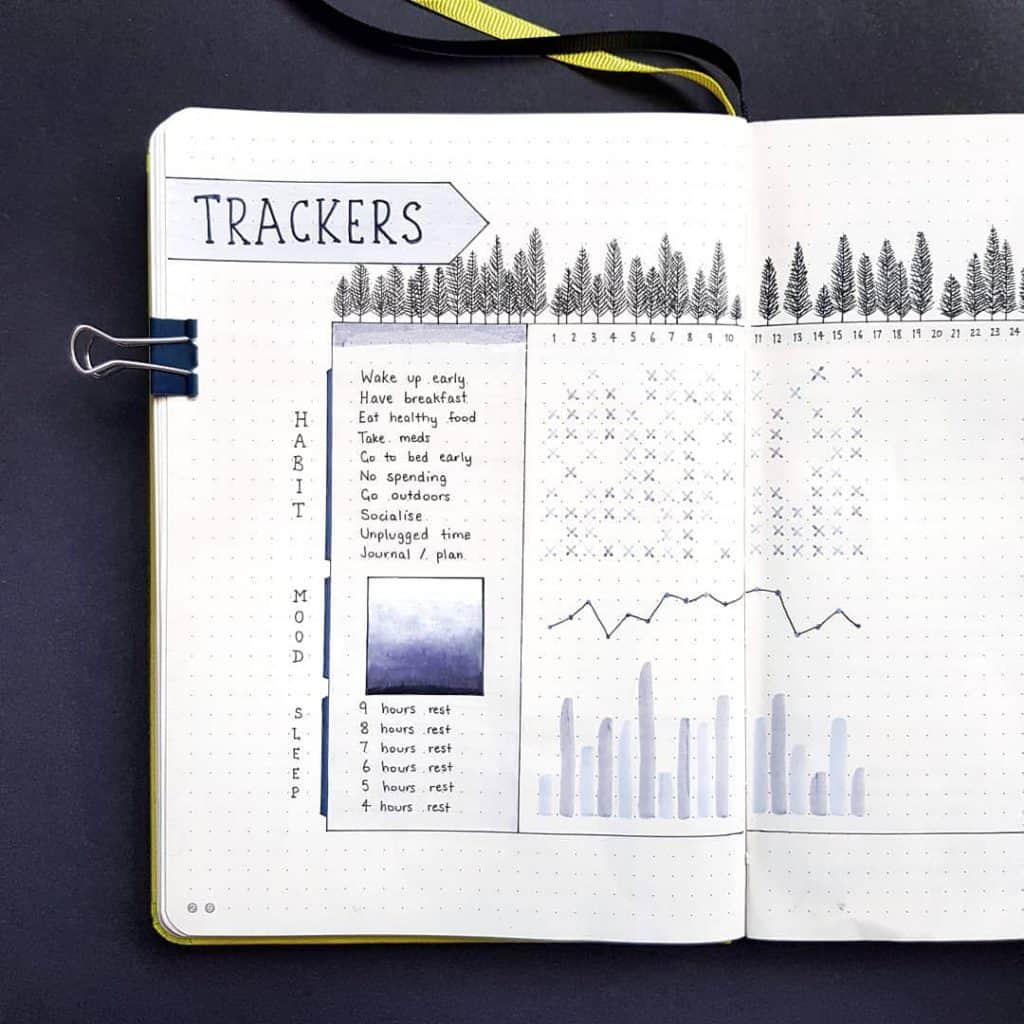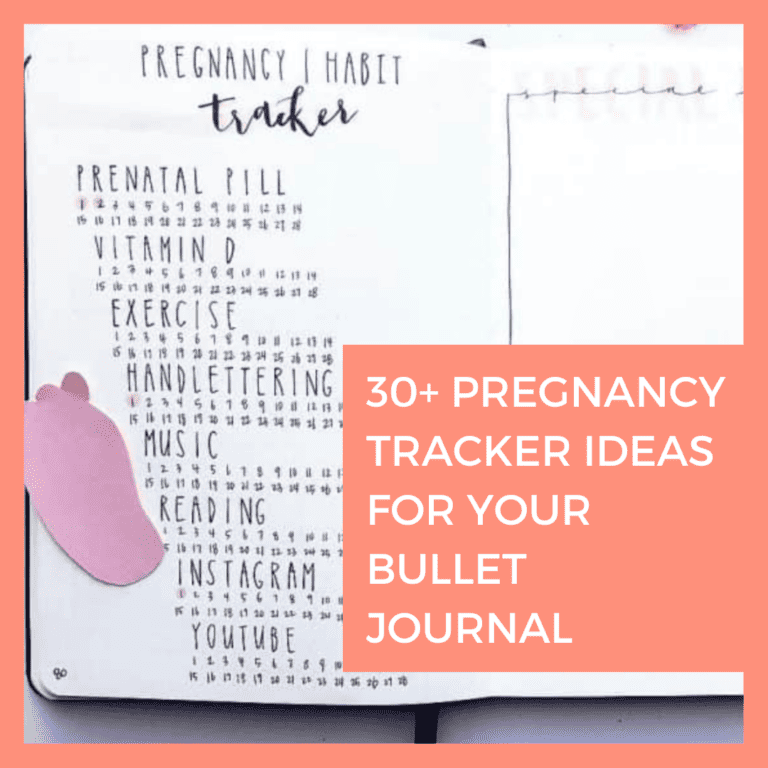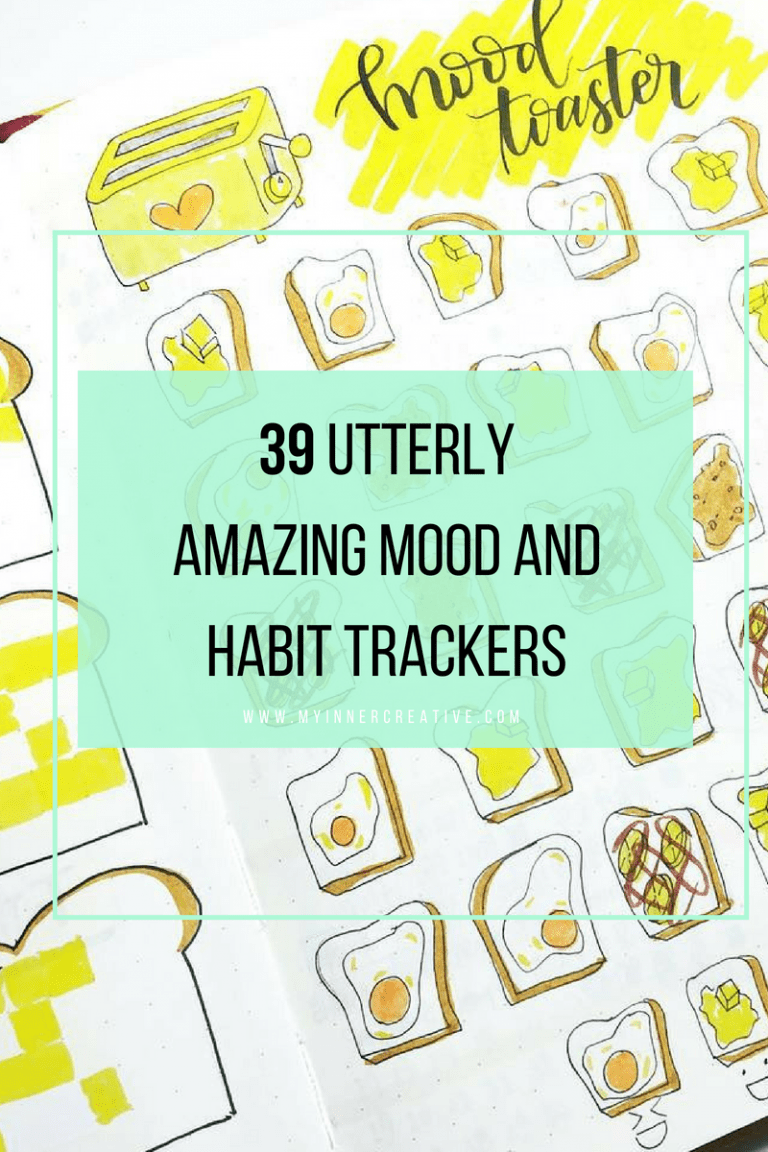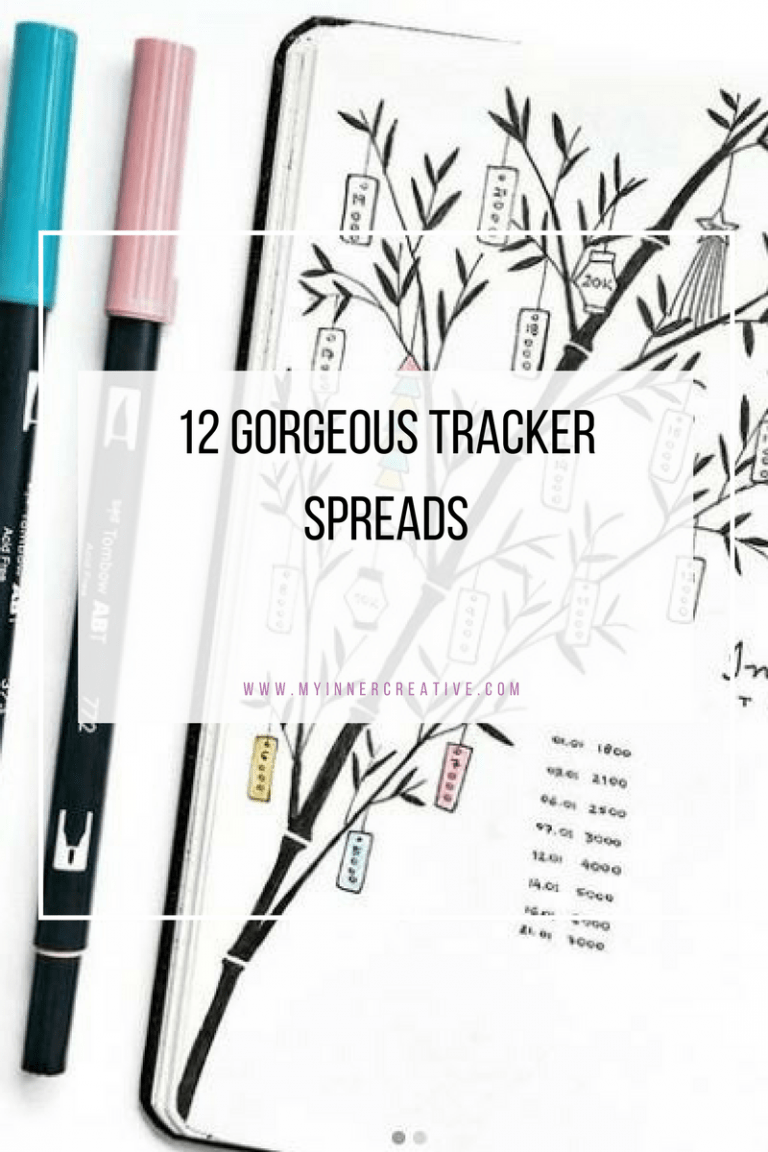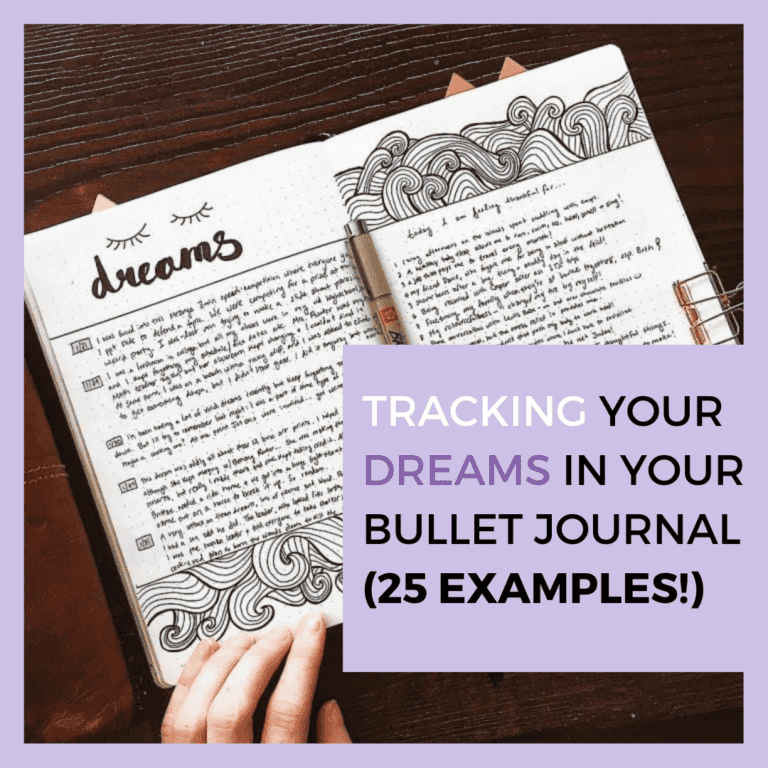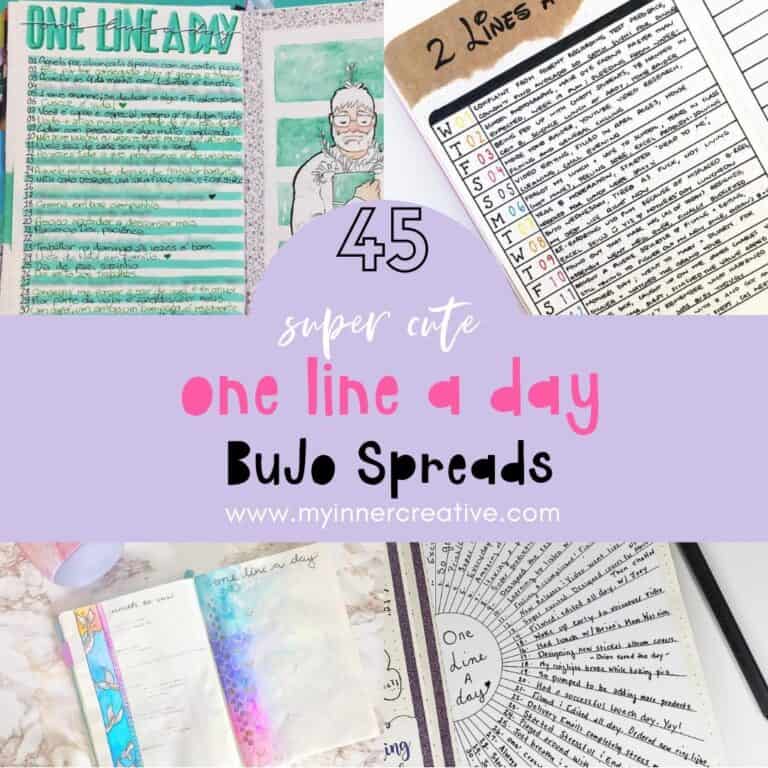The Ultimate Guide to Using a Bullet Journal to Track and Analyze Your Sleep Patterns
Welcome to the ultimate guide on using a bullet journal to track and analyze your sleep patterns! We all know that a good night’s sleep is essential for our well-being, but do you ever wonder if you’re truly getting the rest you need? Using a bullet journal sleep tracker is not hard to do and I’ll show you how!
Needing more inspiration? Check out our post on: 20 Sleep Trackers in your bullet journal for better sleep habits
With the help of a bullet journal sleep tracker, you can take control of your sleep and gain valuable insights into your sleep patterns. In this comprehensive guide, we’ll walk you through the steps of setting up a sleep tracker in your bullet journal, including how to track your bedtime routine, monitor your sleep duration, and analyze the quality of your sleep. We’ll also explore different sleep tracking techniques, such as using sleep logs and habit trackers, to help you identify patterns and make necessary adjustments for optimal sleep. Whether you’re a beginner or a seasoned bullet journal user, this guide will equip you with the tools and knowledge to transform your sleep habits and wake up feeling refreshed and rejuvenated. So grab your journal and let’s dive in!
What is a Bullet Journal?
Before we delve into using a bullet journal for sleep tracking, let’s briefly explore what a bullet journal is. A bullet journal is a flexible and customizable system that combines elements of a planner, diary, and journal. It was created by Ryder Carroll as a way to help people organize their lives and track their goals in a simple and efficient manner. The beauty of a bullet journal lies in its adaptability – you can tailor it to suit your own needs and preferences.
To get started with a bullet journal sleep tracker, all you need is a blank notebook and a pen. The basic idea is to use a series of bullet points, symbols, and short notes to record and organize your thoughts, tasks, events, and goals. It’s a minimalist approach to planning and tracking that allows for creativity and personalization.
By using a bullet journal to track your sleep patterns, you can gain a deeper understanding of your sleep habits and identify areas for improvement. It’s a powerful tool that can help you establish a consistent sleep routine, track your progress, and make adjustments as needed.
Benefits of Using a Bullet Journal Sleep Tracker
There are numerous benefits to using a bullet journal sleep tracker for tracking your sleep patterns. Here are just a few:
- Increased Self-Awareness: By tracking your sleep, you become more aware of your own sleep patterns and habits. This self-awareness can help you identify factors that may be affecting your sleep quality, such as caffeine consumption, screen time, or stress levels.
- Improved Sleep Hygiene: A bullet journal sleep tracker can serve as a visual reminder of your sleep goals and routines. By regularly tracking your sleep patterns, you can establish a consistent sleep schedule, develop a relaxing bedtime routine, and create an environment conducive to better sleep.
- Identification of Sleep Patterns: Tracking your sleep over time allows you to identify patterns and trends. You may discover that you consistently have difficulty falling asleep on certain nights or that you sleep longer on weekends. This information can help you make informed decisions about your sleep habits and make necessary adjustments.
- Stress Reduction: Sleep tracking can help reduce stress by providing a sense of control over your sleep habits. Understanding your sleep patterns and progress towards your sleep goals can alleviate worries about sleep-related issues.
- Enhanced Productivity: By tracking and optimizing your sleep, you can wake up feeling more refreshed and energized, leading to increased productivity throughout the day.
- Holistic Health Approach: Incorporating sleep tracking into your bullet journal allows you to create a holistic approach to self-care. By connecting your sleep habits with other wellness activities, such as exercise and nutrition, you can address your overall well-being.
Now that you understand the benefits of using a bullet journal for tracking your sleep patterns, let’s dive into the practical steps of setting up a sleep tracking spread in your bullet journal.
How to Set Up a Sleep Tracking Spread in Your Bullet Journal
Setting up a sleep tracking spread in your bullet journal sleep tracker is a simple and creative process. Here’s how to get started:
- Choose a Dedicated Sleep Tracking Page: Start by setting aside a dedicated page or spread in your bullet journal for tracking your sleep. This can be a single page or a double-page spread, depending on the amount of space you want to allocate for your sleep tracker.
- Create a Sleep Log: Begin by creating a sleep log where you can record the date, bedtime, wake-up time, and any observations or notes about your sleep. This log will serve as the foundation for tracking and analyzing your sleep patterns.
- Add Additional Elements: Consider adding additional elements to your sleep tracking spread to enhance your tracking experience. For example, you could include a space to record your mood upon waking, the number of times you woke up during the night, or any dreams you remember.
- Utilize Sleep Symbols and Color Coding: Incorporate symbols and color coding into your sleep tracking spread to make it visually appealing and easy to interpret. For example, you could use different symbols to represent different sleep quality ratings or color code your sleep duration based on the recommended hours of sleep.
- Set Sleep Goals: Consider setting specific sleep goals in your bullet journal sleep tracker. Whether it’s aiming for a certain number of hours of sleep per night or establishing a consistent sleep schedule, having clear goals can motivate you to prioritize sleep and track your progress.
- Use a Sleep Habit Tracker: Consider creating a sleep habit tracker in your bullet journal to monitor other sleep-related habits, such as caffeine intake, screen time before bed, or relaxation techniques. Tracking these habits alongside your sleep patterns can provide additional insights into factors that may be affecting your sleep quality.
- Decorate and Personalize: Make your sleep tracking spread uniquely yours by decorating it with illustrations, washi tapes, and stickers. Personalize your spread to make it an enjoyable and rewarding part of your bullet journaling routine.
Remember, the key is to create a system that works best for you. Experiment with different layouts and elements until you find a combination that fits your preferences and lifestyle.
Tracking Sleep Quality and Duration in Your Bullet Journal sleep tracker
Tracking both sleep quality and duration is essential for gaining a comprehensive understanding of your sleep patterns. Here’s how you can track these two factors in your bullet journal sleep tracker:
- Sleep Quality: Assign a sleep quality rating to each night’s sleep. You can use a scale from 1 to 5, with 1 being poor quality and 5 being excellent quality. This rating will give you a quick visual overview of your sleep patterns over time.
- Sleep Duration: Record the total duration of your sleep each night. This can be done by noting the time you went to bed and the time you woke up, and calculating the difference. Aim for the recommended 7-9 hours of sleep for adults.
By tracking both sleep quality and duration, you’ll be able to identify patterns and make adjustments to your sleep routine as needed.
Analyzing Trends and Patterns in Your Sleep Data
Once you have collected enough sleep data in your bullet journal sleep tracker, it’s time to analyze the trends and patterns that emerge. Here are some key points to consider:
- Consistency: Look for patterns in your bedtime and wake-up times. Are you going to bed and waking up at consistent times each day? Consistency is important for establishing a healthy sleep routine.
- Sleep Quality: Analyze your sleep quality ratings over time. Are there certain days or periods when your sleep quality is consistently lower? This could indicate external factors that are impacting your sleep.
- Sleep Duration: Examine your sleep duration data. Are you consistently getting enough sleep, or are you consistently falling short of the recommended hours? Adjust your bedtime routine accordingly to ensure you’re getting the sleep you need.
- Identify Sleep Triggers: Look for any correlations between your sleep data and other factors in your life. For example, you may notice that you sleep better on days when you exercise or on days when you practice relaxation techniques. Identifying these correlations can help you establish positive sleep triggers.
Analyzing your sleep data will provide valuable insights into your sleep patterns and help you make informed decisions about your sleep habits.
Incorporating Other Wellness Habits Into Your Bullet Journal
While tracking your sleep patterns in your bullet journal, you can also incorporate other wellness habits to create a holistic approach to self-care. Here are some ideas:
- Mood Tracking: Include a mood tracker in your bullet journal to record your daily mood. This will help you identify any correlations between your sleep quality and your mood.
- Exercise and Nutrition: Create dedicated pages in your bullet journal to track your exercise routines and nutrition. These habits can have a significant impact on your sleep quality, so it’s important to monitor them alongside your sleep patterns.
- Stress Management: Use your bullet journal sleep tracker to track stress management techniques, such as meditation or journaling. By managing stress effectively, you can improve your sleep quality and overall well-being.
- Mindfulness and Relaxation: Incorporate mindfulness exercises and relaxation techniques into your bullet journaling routine. Practicing mindfulness can help reduce stress and promote a sense of calm before bedtime.
By incorporating other wellness habits into your bullet journal sleep tracker, you’ll create a comprehensive system for tracking and improving your overall health and sleep.
Resources and Tools for Enhancing Your Bullet Journal Sleep Tracking
To enhance your bullet journal sleep tracking experience, there are various resources and tools you can utilize. Here are a few suggestions:
- Bullet Journal Sleep Tracker Templates: Look for pre-designed sleep tracker templates online or create your own. These templates can provide structure and inspiration for your sleep tracking spreads.
- Sleep Tracking Apps: Consider using sleep tracking apps in conjunction with your bullet journal sleep tracker. These apps can provide additional data and insights into your sleep patterns, such as sleep stages and movement during the night.
- Sleep Education Resources: Educate yourself on the science of sleep and the importance of good sleep hygiene. Understanding the factors that affect your sleep can help you make more informed decisions about your sleep habits.
- Sleep Accessories: Consider using sleep accessories to complement your sleep tracking efforts. Items such as a comfortable pillow, a soothing eye mask, or a white noise machine can contribute to a more restful sleep.
Remember, the goal is to create a system that works best for you. Experiment with different resources and tools until you find a combination that meets your needs and enhances your sleep tracking experience.
Harnessing the Power of a Bullet Journal for Better Sleep Hygiene
In conclusion, using a bullet journal sleep tracker to track and analyze your sleep patterns can be a game-changer for your sleep hygiene. By establishing a consistent sleep routine, tracking key factors such as sleep quality and duration, and analyzing your sleep data, you can make informed decisions about your sleep habits and make necessary adjustments for optimal sleep.
Remember to be consistent, use symbols and color coding, and regularly analyze your sleep data to identify patterns and make improvements. By incorporating other wellness habits into your bullet journal sleep tracker, you can create a holistic approach to self-care and optimize your overall well-being.
So grab your bullet journal sleep tracker, unleash your creativity, and start tracking your sleep patterns today. Wake up feeling refreshed and rejuvenated, ready to take on the world one good night’s sleep at a time!

